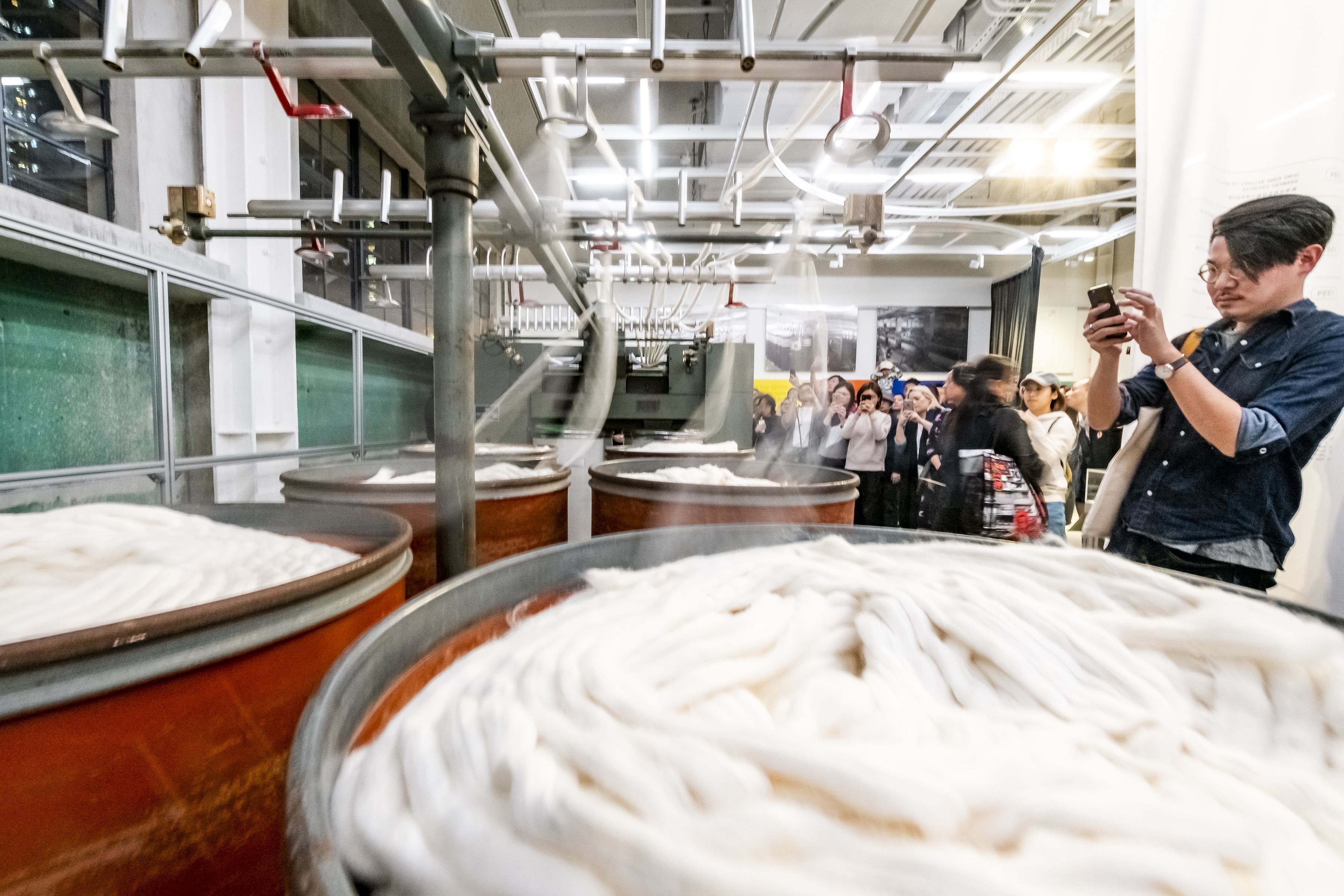
Cotton-Spinning: Past and Future (Part 2)
20.12.2021
CHAT tells the story of textile through voices spanning generations, industries and disciplines. Here at CHAT, we invite different stakeholders to respond to and activate the stories from the CHAT Memory Bank based on interviews with these former factory workers. In this article, CHAT’s 2021 intern Michelle Leung brings to life the story of James Wong, a third-generation cotton spinner.
Among the mills, James Wong is closest to the members of Nanyang Cotton Mill and Central Spinners. Many of the workers have worked in the mills for decades, whom James remembers fondly since at the age of six or seven.
And the bonds have been maintained ever since. To this day, James still calls them by their old, familiar nicknames. Among the many anecdotes and memories of workers at the mills, James recalls one in particular – the time when a worker accidentally used Wong Toong Yuen’s private lift by mistake. At the time, he was there in the mills for a job interview. After he stepped into the private lift with Wong, Wong looked at him with a smile. He thought to himself: Why are people so polite when I am only here for a job interview?
When he stepped out of the lift, the secretary asked, why are you here? Do you know Mr Wong? The employee replied, no, I did not, I was just here for an interview. In the end, the secretary invited the employee to take the same lift back to the lobby and then take another lift to a different floor for the interview.
Countless other encounters and interactions such as this took place at the mills, each reflecting the bonds between Wong and his employees. When Hong Kong Spinners moved to Indonesia in the 1970s to establish the new P.T. Tyfountex Indonesia, more than 60 employees followed suit and relocated with the company. As pioneers toiling in a new land, the workers did not have many benefits, settling only in dormitories, but regardless they faithfully worked until retirement.
Now and Future
Aside from looking to the past, how do we envisage the future of the cotton-spinning industry? James’s wife Christine used to work in an association where she observed the gradual decrease in talents working in the industry, coupled with the lack of adequate support from the society and the government to the cultural and design industry. Witnessing the international corporation that has grown from cotton-spinning into the garment manufacturing conglomerate it is today, Christine hopes to provide students with a platform to showcase themselves, and even working with brands in places from China to Europe to realise their designs.
Hong Kong Spinners provides scholarships and internship opportunities in Indonesia for VTC students. They also aim to engage artists and designers for cross-disciplinary collaboration, hoping to integrate art into everyday life. James values the importance of cooperation and communication across generations. Young people entering the industry should respect the older generation. Still, they also need to seriously consider whether the conventional mindset and working style are suitable for the current circumstances. Hence, communication with one another is of utmost significance, instead of stubbornly insisting on one’s own opinions or following other people’s ideas blindly. At the same time, people should always be willing to share about their own experiences to allow for fair competition.
Factory to Revitalisation
Regarding the revitalisation project of Nan Fung Textiles, Mills 4, 5 and 6, Christine admires the way Nan Fung earnestly honours the cotton-spinning history. From its beginnings as a cotton spinner, Nan Fung witnessed the development of Hong Kong and testified to the transformation of its textile industry, honouring the embodied historical significance through gathering the voices of vital stakeholders from that time through these interviews. James said, ‘I think the textile industry and the cotton-spinning industry was a defining marker of the prosperous 1960s and 1970s. How could we erase this history? If you ask me to explain this era to my children, I don’t think I can do it. At least there is something like The Mills now. We can bring our children and show them what we created in the past. And they would all say, “Wow.”’
 Draw frame reactivated at The D. H. Chen Foundation Gallery
Draw frame reactivated at The D. H. Chen Foundation Gallery
History to be Remembered
The golden age of textile industrial history was forged by a group of people who have grown up in the same land as us. Whether it is Wong Toong Yuen and his father, C Y Wong, who immigrated to Hong Kong from Shanghai; the 60 or so Hong Kong Spinners employees who left everything for a new life in Indonesia; or James and Christine Wong, who continue to hope for the new generations of the textile industry – these are the people who made Hong Kong as we know it today. We are proud to keep their stories alive in our minds. For what is history but a gathering of life stories?
Read Part 1 here.
If you or anyone you know has worked in the textile industry and would be willing to share your stories, we would love to hear from you. Please get in touch by emailing enquiry@mill6chat.org with the subject line ‘CHAT Memory Bank’ or call +852 3108 2399.